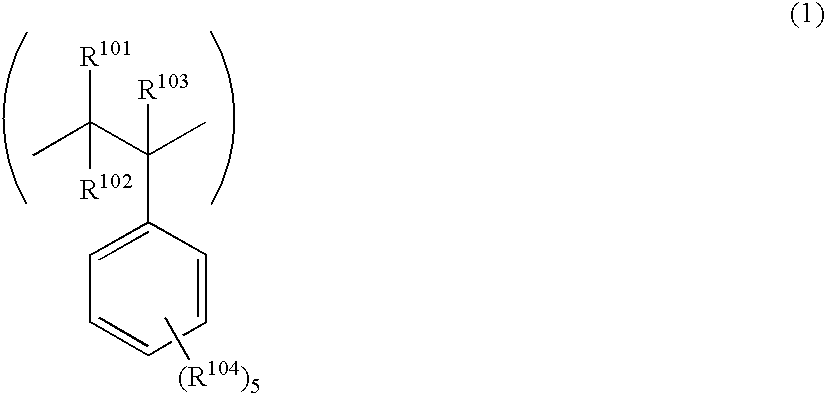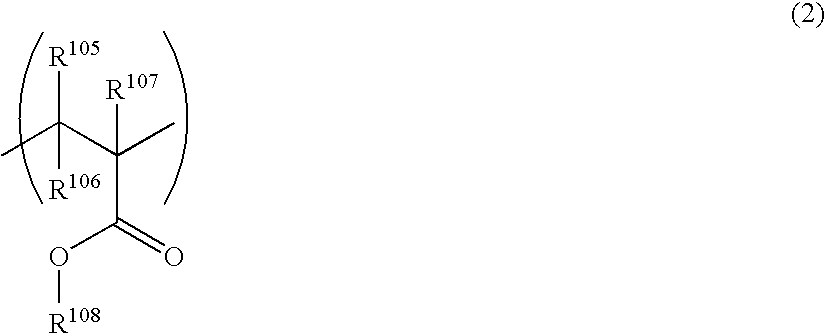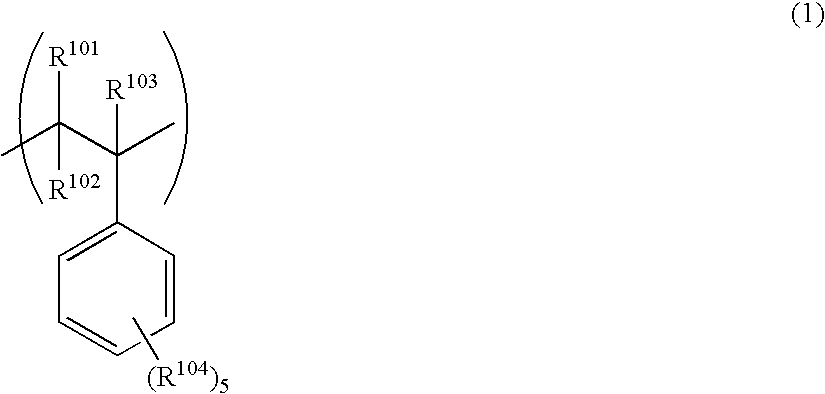Protective film for polarizers
- Summary
- Abstract
- Description
- Claims
- Application Information
AI Technical Summary
Benefits of technology
Problems solved by technology
Method used
Image
Examples
examples
[0275]The invention is described more concretely with reference to the following Examples. In the following Examples, the amount and the ratio of the material, the reagent and the substance used, and the operation may be suitably modified or changed not overstepping the sprit and the scope of the invention. Accordingly, the scope of the invention should not be limited to the following Examples.
[0276]In the invention, each property was evaluated as follows.
(Evaluation of Re and Rth)
[0277]Re and Rth of the film were evaluated in above mentioned definition.
(Contribution of Cellulose Acetate Resin to Re Expression)
[0278]A protective film for polarizers having a thickness of 80 μm is produced, this is stretched by 20% at 180° C., and Re and the thickness of the film are measured. On the other hand, a protective film for polarizers having a thickness of 80 μm is produced with no addition of an additive contributing toward optical expression thereto, this is stretched by 20% at 180° C., an...
example a
Cellulose Acylate Film Formation
(1) Cellulose Acylate
[0285]As listed in Table 3-5, various kinds of cellulose acylate differing in substitution degree of acyl group were prepared according to the following procedure.
[0286]To cellulose 100 parts by mass, sulfuric acid 7.8 parts by mass was added as a catalyst, and then a carboxylic acid was added followed by acylation reaction at 40° C. Next, the degree of total substitution and the degree of 6-position substitution were controlled by changing the sulfuric catalyst amount, the water amount and the ripening time. The ripening temperature was 40° C. Low molecular weight contents of cellulose acylate in the obtained mixture were removed by washing with acetone.
(2) Preparation of Dope
Cellulose Acylate Solution
[0287]A following composition was thrown into a mixing tank, stirred to dissolve respective components, further heated at 90° C. for about 10 minutes, and then filtered on a filter paper having an average pore size of 34 μm and a s...
example b
(Production of Polarizer)
[0293]Iodine was adsorbed by the stretched polyvinyl alcohol film to prepare a polarizing element. The cellulose acylate film produced in Example A was stuck to one surface of the polarizing element, using a polyvinyl alcohol adhesive. The saponification condition was as follows:
[0294]An aqueous sodium hydroxide solution (1.5 mol / L) was prepared and kept at 55° C. An aqueous dilute sulfuric acid (0.005 mol / L) was prepared and kept at 35° C. The cellulose acylate film produced in Example A was dipped in the above aqueous sodium hydroxide solution for 2 minutes, and then dipped in water to fully remove the aqueous sodium hydroxide solution. Next, this was dipped in the above aqueous dilute sulfuric acid solution for 1 minute and then dipped in water to fully remove the aqueous dilute sulfuric acid solution. Finally, the sample was fully dried at 120° C.
[0295]A commercial cellulose triacylate film (Fujitac TD80UF, by FUJIFILM) was saponified, and stuck...
PUM
 Login to View More
Login to View More Abstract
Description
Claims
Application Information
 Login to View More
Login to View More - R&D
- Intellectual Property
- Life Sciences
- Materials
- Tech Scout
- Unparalleled Data Quality
- Higher Quality Content
- 60% Fewer Hallucinations
Browse by: Latest US Patents, China's latest patents, Technical Efficacy Thesaurus, Application Domain, Technology Topic, Popular Technical Reports.
© 2025 PatSnap. All rights reserved.Legal|Privacy policy|Modern Slavery Act Transparency Statement|Sitemap|About US| Contact US: help@patsnap.com



